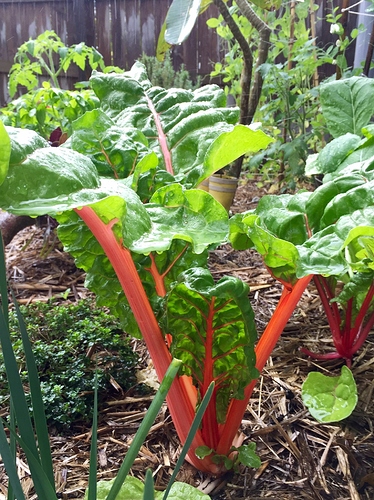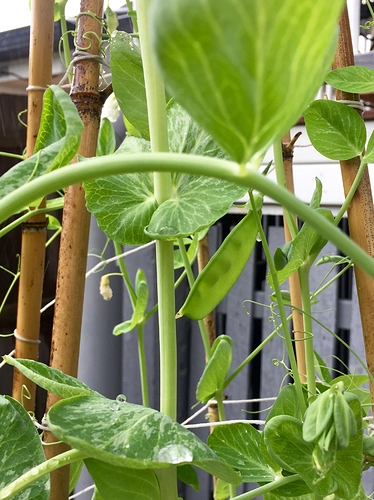I am a Master Gardener in Utah, though I have since moved away and don’t know if they can/will transfer it to my new state. I already knew a lot going into it, but it was useful as the region was vastly different climatologically than anywhere I’d gardened before, learning the pests and diseases of most concern there, etc. I also learned a fair amount about topics I didn’t have a lot of experience with (eg. turf grass, fruit trees). I also was able to take some workshops super cheap (I did 2 fruit tree grafting classes that were really good). Nearly all of the speakers/presenters were from the university system (faculty). I did my classes and volunteering as a trainee before covid, so everything was in person. Mostly it was nice to meet similar minded people and get involved in that community. Even though you technically can learn “everything” online these days, for me it was worth the money and time. (It was a lot less than $500 though, I think.)
That makes a lot of sense, thanks! One of the things I’m definitely the most interested in is getting the CO-specific information, so glad to hear that they did a good job of getting into the UT-specific details in your course.
Yes, absolutely, they are very committed to science and research-based information, and there were many things true in Utah that might not be true elsewhere! As a Master Gardener you also agree to only talk about science-based ideas and methods (regardless of what worked for grandma, of if that’s “how I always did it”) in the context of being an official Master Gardener (so like at educational events and such - what you do on your own time is your own business!). It may vary slightly how good at this they are, since the Master Gardener program is run through each individual state’s Agricultural Extension Service (and I have noticed that different states have different levels of information available online), but since they are connected with the local land grant university, I think this should be true everywhere! My recollection is that CO has a lot of information available online through their Agricultural Extension Service, so I imagine they would be quite good.
Ooh I should check out the agricultural extension website to see what it’s like, thanks for the suggestion. You may have done the program long enough ago that it felt less urgent at that time, but did the program get into climate change stuff? I’d like to plan a garden that’s resilient to, say, hotter summers than Colorado experienced when my parents were my age. Maybe that’s something instructors get into if people ask about it?
Not explicitly “climate change”, but Utah has always been a hot dry climate, and strategies for water conservation have only become more appropriate/important, rather than being a new thing. (Also, although Salt Lake City is very liberal, the state as a whole is very conservative, so talking about “climate change” might be more difficult whereas talking about “water conservation” has less resistance because it just makes good sense). There are many initiatives to embrace things like xeriscaping (there was a Flip the Strip program that paid rebates to convert your parking strip to xeriscaping), encouraging the use of natives and drought resistant varieties rather than water hungry plants, encouraging the use of shrubs/trees and perennials rather than annuals to reduce soil disturbance and many times reduce water demands, encourage the use of grey water in landscaping where permitted, encourage doing research and choosing varieties of plants that are appropriate to a hot dry climate that gets the pattern of rainfall that it does, encourage considering things like soaker hoses and drip irrigation rather than impact sprinkler-type systems (that lawns use), encouraging reducing lawns (which are water hogs), encouraging deep watering rather than frequent shallow watering, encourage using mulch (which makes a HUGE difference in how much water you need for landscaping and vegetable gardens), encourage considering rain gardens to help control urban runoff and keep rainfall on-site, etc. etc. etc. 
Thanks for asking @LadyDuck. Harvests have been few and far between in these dark days of winter. I occasionally nibble a snow pea.
I was inspired to harvest some Asian veggies to serve with my marinated pork rashers.
Garden picture dump!
Tomatoes. Little ones have unripe fruit. Big ones flowers. Maybe we will get some tomatoes after all.
Greens. Silver beet/chard and mustard greens. We are eating leaves off these most days. Also the basil that didn’t get the memo about winter, the other plants have stopped growing, started dying back, or gone to flower.
Snap peas and snow peas. I never plant these densely enough but we are getting enough at the moment that there is usually a snack for Pikelet in the garden.
Flowers. I definitely didn’t plant any dwarf sunflowers. I think that one had the top eaten off so often by possums that it just decided to go with it.
Not pictured because it’s all flopped over and unphotogenic in the rain is the flowering pineapple sage. This is Pikelet’s favourite thing to snack on.
Pineapple sage sounds like something my garden needs, then. Is she eating the leaves or the flowers?
Flowers!
The leaves you can eat too but they are a bit furry and taste a bit meh. The flowers on the other hand are sweet and floral.
Those tomatoes!
I think our tomatoes are always scraggly and dead well before we have greens and peas growing. Then again our summer is like 43920 months long every year so they’re probably tired.
My winter seems more like late English spring than actual winter (I say this as someone who has been to England once, in December ha…), it’s when most things seem to grow best here. The big tomatoes have no chance in our summer.
I love pineapple sage! I haven’t grown it in a few years but it’s so lovely and pollinators go bonkers for it in my yard.
This is so funny to me… this is a marketing email from a design company, with their advice for “easy backyard DIY projects.”
Guaranteed success??? Is one of the steps to make a wish from a genie that your garden would always thrive?
Pretty sure they have never grown a vegetable garden…
Or they’re all fake plants and all the vegetables come from the product section at the grocery store.
Found these growing with my tomatoes…any mushroom experts here? Definitely not planning on eating them but curious to see what they are.
I’m tired so I saw your picture and username and was like “That’s definitely not sunflowers.”
No idea, but if they’re in with your tomatoes you’ve got a bonus beneficial symbiosis going on.













